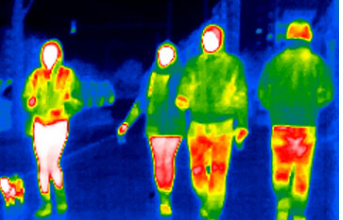Saturn’s Stunning Rings Vanishing Soon – Unveiling the Cosmic Mystery!”

Prepare to be captivated by the shocking revelation of Saturn’s enchanting rings disappearing into the cosmic abyss, and you have a front-row seat to the celestial show! Brace yourself for this astronomical bombshell!
Back in 1610, the legendary Galileo Galilei, the father of modern astronomy, first gazed upon Saturn’s magnificent rings. Imagine his awe as he peered through a primitive telescope, describing these cosmic marvels as “ears.” Fast forward centuries later, and now, you can witness these celestial wonders with just basic astronomical gear.
Saturn’s Stunning Rings Vanishing Soo
But here’s the spine-tingling twist – this celestial spectacle has a ticking clock, set to expire in 2025. Saturn’s rings, a cosmic phenomenon composed of seven distinct rings, are on the verge of vanishing not once, but twice. They’re believed to be remnants of comets, asteroids, and wayward moons that dared to approach Saturn, only to be torn asunder by its immense gravitational pull.
The rings hold countless icy fragments, concealed beneath a shroud of cosmic dust. Their age remains a mystery, though recent research suggests they might be cosmic newcomers, perhaps forming just 400 million years ago, younger than a mere tenth of Saturn’s age.
But here’s where it gets truly shocking – Saturn’s rings are slowly disintegrating, shedding icy particles that gracefully plummet into the planet’s atmosphere. By 2025, Saturn will align edge-on with Earth, rendering these splendid rings nearly invisible. It’s akin to spotting a sheet of paper edge-on at the far end of a soccer field.
READ ALSO:- Dolphins use distinctive whistles for their young.
But fear not! This cosmic spectacle is a fleeting one. As Saturn continues its 29.5-year celestial dance, it will gradually tilt, once again unveiling the other side of its rings, reaching a breathtaking zenith in 2032. The silver lining to this celestial twist is the enhanced visibility of Saturn’s moons.
For now, Saturn graces us with a spectacular view for nighttime stargazing. So seize this celestial moment, grab your telescope, and witness the enchanting beauty of Saturn’s rings while you still can.
But there’s more to Saturn than just its vanishing rings. It’s the sixth planet from the Sun, second only to Jupiter in size. A gas giant primarily composed of hydrogen and helium, it boasts a radius nine times that of Earth. Yet, its low density and mass, just 95 times that of Earth, add to the cosmic enigma.
Saturn’s ring system is a celestial marvel, consisting of countless ice particles, ranging from tiny grains to house-sized chunks, orbiting the planet. They’re classified alphabetically in the order of their discovery, with the main rings being A, B, and C.
With over 145 moons, Saturn is a moon-lover’s paradise, with Titan being the largest, even larger than Mercury. This moon stands out with its substantial atmosphere, primarily composed of nitrogen with hints of methane.
Saturn’s magnetic field, weaker than Jupiter’s but stronger than Earth’s, emits radio waves, especially from its polar auroras.
The Cassini-Huygens mission, a collaboration between NASA, ESA, and ASI, provided invaluable insights into Saturn, its rings, and moons. It uncovered the planet’s celestial secrets, from its arrival in 2004 to its atmospheric descent in 2017.
In mythology, Saturn takes its name from the Roman god of agriculture and wealth, also the father of Jupiter. With its astronomical symbol (♄) resembling the god’s sickle, Saturn has fascinated observers since ancient times.
Saturn’s rings, one of the solar system’s most striking features, are composed of ice particles and rocky debris. They’re not solid but made up of countless small orbiting particles. These rings, while exceptionally wide, are incredibly thin, with an average thickness of approximately 10 meters.
Divided into various sections like the A, B, and C rings, they possess varying transparency and brightness. Notable gaps, such as the Cassini Division, Encke Gap, and Keeler Gap, are dispersed within the rings.
The intricate dance of Saturn’s moons around the rings influences their structure and patterns through gravitational interactions, known as “orbital resonances.” Some moons, aptly named “shepherd moons,” orbit close to the ring edges, maintaining their paths and sharp edges.
Theories about the rings’ origin abound. They could be remnants of a destroyed moon or comet or remnants from the original nebular material that formed Saturn. Their exact age is still debated, but they may be relatively young, possibly just a few hundred million years old.
Finally, Saturn’s rings are visible from Earth with a small telescope or high-powered binoculars under ideal conditions. Their appearance changes as Saturn orbits the Sun, presenting different angles to Earth throughout its 29.5-year journey.
The study of Saturn’s rings has provided profound insights into the processes shaping our solar system. But time is ticking, and the clock is counting down to the mystery of Saturn’s disappearing rings. So, don’t miss this extraordinary celestial event – it’s a sight to behold!




